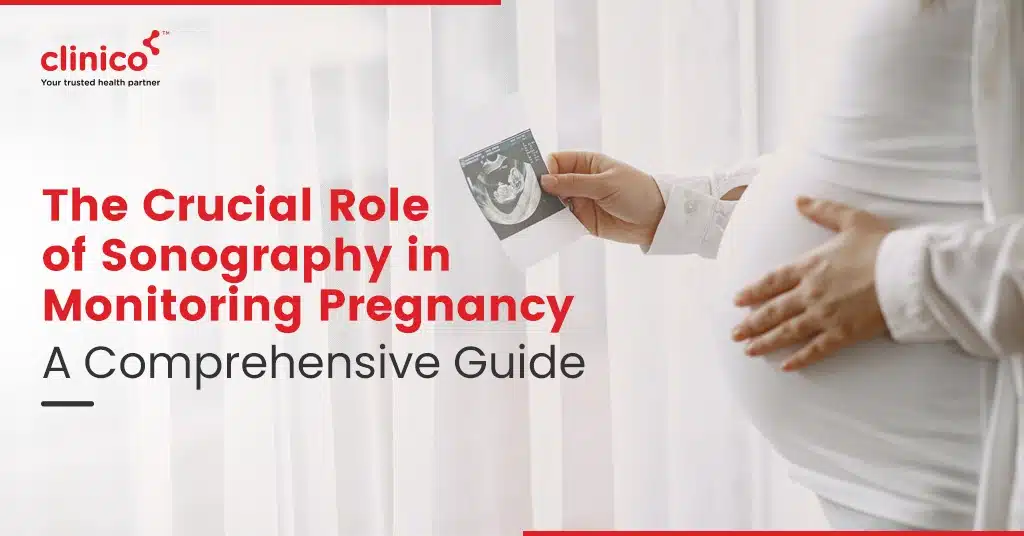
Pregnancy is a miraculous journey that intertwines anticipation with the meticulous oversight of maternal and fetal health. Within this complex ballet of biological processes, sonography emerges as a pivotal tool, serving as the eyes and ears within the womb. This non-invasive, diagnostic marvel allows healthcare professionals and expectant parents alike to visualize and monitor the fetus’s growth and development, ensuring a pathway to proactive and informed healthcare decisions. Let’s delve into the indispensable role of sonography in pregnancy, exploring its applications at various stages and its profound impact on prenatal care.
Understanding Sonography and Its Importance
Sonography, often referred to as ultrasound, is a cornerstone of prenatal care, utilizing high-frequency sound waves to capture live images from inside the mother’s womb. This technology is celebrated for its safety and efficacy, offering a real-time glimpse of the fetus without the risks associated with ionizing radiation. It enables the early detection of potential complications, guides therapeutic decisions throughout the pregnancy, and plays a crucial role in reassuring expectant parents about their baby’s development. By providing detailed images of the developing fetus, sonography fosters a unique bond between parents and their unborn child, enriching the pregnancy experience with each heartbeat visualized.
Early Pregnancy Scans
The first chapter in the sonographic journey often begins with the early pregnancy scan, conducted around 8-12 weeks of gestation. This initial encounter serves multiple critical purposes: confirming the pregnancy, verifying its viability through the detection of fetal heartbeat, and accurately estimating the due date. Moreover, it assesses the pregnancy’s uterine location, guarding against ectopic pregnancies, and evaluates the potential for multiples. This early glimpse reassures parents of the pregnancy’s normal progression and lays the groundwork for personalized prenatal care.
Nuchal Translucency (NT) Scan
Between the 11th and 14th week, the Nuchal Translucency scan offers an early peek into the baby’s risk for certain genetic conditions, including Down syndrome. By measuring the translucent space in the tissue at the baby’s neck, healthcare providers can assess the likelihood of chromosomal abnormalities. This critical scan combines the NT measurement with maternal age and, sometimes, blood tests to evaluate risk, providing valuable information for further diagnostic testing decisions.
Anatomy Scan
The anatomy scan, conducted between 18 and 22 weeks of gestation, stands as a comprehensive examination of fetal development. During this pivotal ultrasound, each part of the baby’s body is meticulously examined for proper growth and development, from the brain and heart to the limbs and organs. This scan can reveal a wealth of information, including the baby’s sex, while primarily focusing on detecting any anatomical abnormalities. It’s a critical moment for parents and healthcare providers to address any concerns and plan for any necessary medical interventions or monitoring.
Growth and Well-being Scans
As pregnancy progresses, growth and well-being scans become integral in the third trimester to monitor the baby’s development continually. These ultrasounds assess fetal growth, amniotic fluid levels, placental position, and overall fetal well-being. They are crucial for identifying conditions like intrauterine growth restriction and ensuring the baby is gaining weight at a healthy rate. These scans can influence the timing and type of delivery, ensuring both mother and baby receive the best possible care.
The Role of Doppler Ultrasound
Doppler ultrasound introduces another layer of fetal assessment, particularly in assessing the blood flow in the umbilical cord, fetus, and placenta. This specialized scan is invaluable in cases where there’s concern about the baby’s growth or the health of the placenta. By evaluating blood flow and placental resistance, healthcare providers can detect potential issues like fetal distress or preeclampsia, allowing for timely interventions to safeguard the pregnancy’s health.
FAQs
Q1: Is sonography safe during pregnancy?
Yes, sonography is deemed safe during pregnancy, using sound waves instead of radiation to generate images. It has been a fundamental part of prenatal care for decades, offering crucial insights without adverse effects on the mother or fetus.
Q2: How many sonograms are typical during a normal pregnancy?
A typical pregnancy will include at least two standard ultrasounds: the early pregnancy scan and the anatomy scan. Additional scans may be recommended based on individual health needs, concerns, or the pregnancy’s progression.
Q3: Can sonography detect all birth defects?
While sonography is a powerful tool, it cannot detect all birth defects. Its ability to identify anomalies depends on various factors, including the fetus’s position, gestational age, and the nature of the defect. Some conditions may not be evident until later in pregnancy or after birth.
Q4: Why is the anatomy scan performed between 18 and 22 weeks?
This period offers an optimal window to examine the fetus’s developing structures in detail. Most major anatomical features can be clearly observed, allowing for a comprehensive assessment of the baby’s health and development. Conducting the scan at this stage maximizes the chances of identifying any abnormalities early enough to make informed decisions regarding the pregnancy’s management or potential interventions.
Q5: What should I do if an abnormality is detected?
If an ultrasound detects an abnormality, your healthcare provider will discuss the findings with you in detail. This discussion will include the nature of the abnormality, its potential implications, and the options available for further testing or management. You may be referred to a specialist, such as a perinatologist or genetic counselor, for more comprehensive evaluation and guidance. It’s crucial to gather as much information as possible and discuss any concerns with your healthcare provider to make informed decisions about your pregnancy and care.
Conclusion
Sonography plays a crucial role in modern prenatal care, offering a blend of diagnostic prowess and emotional connection that enriches the pregnancy journey. Its ability to safely and accurately visualize the fetus inside the womb has revolutionized maternal and fetal health, enabling early detection of potential issues, guiding clinical decisions, and providing peace of mind to expectant parents. As sonography technology continues to advance, its role in prenatal care will likely grow even more integral, continuing to improve outcomes for mothers and babies alike.

